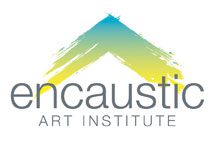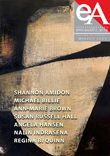General information about submitting images to EAI:
When submitting images of your work for a juried show – or if you’re sending images to EAI for other purpose – we request that images be high-resolution JPEGs. You can search Google to find many articles about image resolution, but for a general sense of what we mean – we suggest your images be saved at 300 DPI, or 181.11 PPI (if your photo editing program allows you to choose between the two).
If we need to reduce the file size, to display an image on our website, or for a press release, we can reduce the file size while saving your original file at high resolution, it’s not as easy to do the reverse with a low-resolution image. If we need to enlarge an image, we may not be able to use a low-resolution file (for example images saved at 72 DPI) without it being pixelated. If you’re using Photoshop or another editing program to work with your image files, and you have the option to set the image resolution, save the file at 300 dpi. (The minimum resolution should not be below 150 dpi, and whenever possible, do not submit 72 dpi images to us).
(For artists/photographers/graphic designers who are more knowledgeable, you’ll know that PPI and DPI are different, but for general purposes here, we are using the terms PPI and DPI interchangeably. If you have the option to save an image using PPI as your measurement, 181.11 PPI is generally fine). Click here for a simplified explanation of the difference between PPI/DPI. For more details on image resolution, click here.)
Especially when you’re submitting images for a juror, it’s always best to have the highest quality images you can provide to show your work in the best light. This is true anytime you send us an image – we use these images for press releases, to put on our website – they are a representation of your work to the public. We – and you – want to present your work in the best, most professional way possible. Images should be lit well, in focus, true to the colors in your piece, not under- or over-exposed. When submitting images for a juried show, whatever image(s) you’ve uploaded for your entry will be what we will download to use for any press release, our website, etc. Always give us the best quality image you can.
How to take better resolution photos on your iPhone or Android phone: Click this link for more information on how you can shoot better resolution images on your iPhone (or Android phone). And for yourself – If you need info on how you can convert RAW format photos, you can do a Google search.
Image dimensions and cropping:
It’s best to make sure the image dimensions for your photo (this is different than the image resolution) aren’t too large – but not too small either. We suggest an image’s dimensions (h x w) to be not larger than 5 inches (1500 px) at the longest dimension for general purposes. If the image’s resolution is 300 dpi this would give you a file size of around 6-7 MB – which is suitable for uploading for a juried show, or for emailing an image to us for other purposes. At that size and resolution, we should also be able to enlarge the image without it being pixelated.
Images should always be cropped close to the edges of your 2-d piece. The only exception to this is if your piece is 2-d but you have elements that extend beyond the substrate so you can’t crop it close to the edges. In that case, be sure the background is neutral. If you are photographing a 3-d piece the background should be black or a neutral color. Make sure your framing of the image is level and square to the piece so that the edges of the painting are not skewed. If your painting has square dimensions, make sure that the image you submit has square dimensions as well. In other words, if the image you send us/submit is not formatted to the same proportions as your painting – the image won’t be an accurate representation of your work.
Emailing images to us, and uploading images to EntryThingy:
If you want to send more than one file to us via email, you may have to adjust the image dimensions down to be able to send a smaller file size for attachment to an email. Most email providers allow files under 20 MB as an email attachment. If your file is (or multiple files are) too large to send via email, try reducing the image dimensions, (not image resolution) to get a smaller file size, or you can send the file(s) via WeTransfer.com, which offers file transfers up to 2GB for free, or Dropbox.com.
There isn’t a hard and fast rule on the dimensions in the settings for our juried exhibit portal, EntryThingy. The biggest factor besides the dpi is the upload size of the file – it should be under 10 MB, saved at 300 dpi, and again, generally, if your file is saved at 1500 px at the longest dimension that should give you a file size that will upload.
Other general guidelines on submitting images of your work:
- Save the file as a .JPG/.JPEG (rather than .TIFF or .PNG) unless we specify differently.
- If you’re editing your files in Photoshop, you will want to save them in RGB color space or sRGB, and save as baseline standard rather than progressive.
- Make sure you are holding the camera square to the piece so that one edge of your piece in the image is not skewed.
Labeling your JPEGs and/or writing your image caption information:
- When you save the image file to send to us, you should always include your first and last name (and preferably the title) in the file name rather than saving it as IMG-2390420 – or whatever name the image file is given by default. That way we can easily identify that the image belongs to you. We get a lot of images, and it can be confusing if the images are not labeled with at least the artists’ last name.
- We use this format for image captions: Artist name, state you reside in (or country if outside the US), medium, dimensions (height x width x depth) in inches, and price. Sometimes we specifically ask for the year the piece was completed to be included. (When sending us information on your work, it’s not mandatory, but a good idea to include). Note: we always list the dimensions of a painting (or sculpture) with the height (vertical dimension) listed first x width x depth (if it is a 3-d piece), in inches. Be sure to list your image information this way. If your work is framed, you should give us the dimensions of the piece itself first without the frame, and then list the dimensions with the frame.
- When listing the media in your description/caption, always include the substrate your work is on. For example, if your piece is an encaustic monotype, on paper, mounted on a cradled wood panel – be sure to include “on cradled wood panel,” in your description (or in this example: “on paper, mounted on a cradled wood panel”), or whatever the substrate/surface is that you used. Leaving the description only as “encaustic” or “encaustic monotype” doesn’t give us the full picture. Someone purchasing your piece, (especially one who may be buying your piece online) may want to know what it is mounted on so they understand what it will mean for them to hang the piece.
- As we are an encaustic/wax group, you should list the encaustic/wax element first, followed by any other media. You may simplify your listing of the media to make the description more concise. This means after you list the primary media you’ve used, when listing any other media – unless you feel it is integral to understanding your piece for the viewer to know – you may not need to list it all individually, you can say “encaustic, mixed media” as a catch-all, umbrella term/description. Or you can list every media element you used – if you do this, try to be somewhat concise though.
- When determining your prices, please remember to take into account any shipping costs, the commission fee – which is a 50/50 split of the sale price for juried shows, or for pieces being hung in the EAI Member Gallery the split is 70% (to the artist)/ 30% to EAI – minus the PayPal transaction fees, (if applicable). Always check the Call for Art for this information, or contact us to verify the commission fees.



